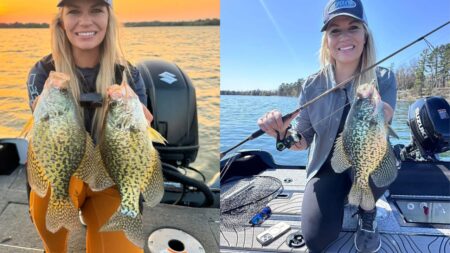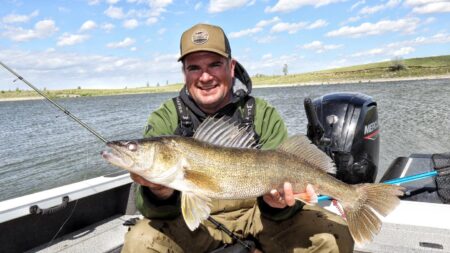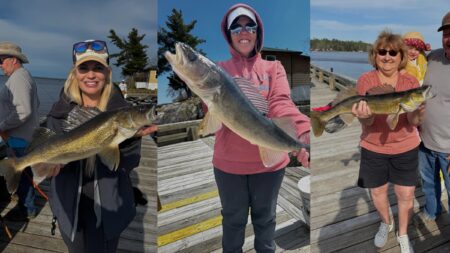With the establishment of aquatic invasive species like Zebra Mussels and Rusty Crayfish, Leech Lake has changed. Walleye diets have shifted heavily to crayfish, and the water has turned crystal clear. Gone are the days of piling up on Stony Point to vertical jigg or drag Lindys just over the side of the boat. You can still catch plenty of fish, but you have to work for them and adjust for the change in water clarity.
Chuck Hasse of Leisure Outdoors has been guiding on Leech Lake for over 15 years, and he dives into the adaptations he’s had to make to remain a successful guide on Leech as the water has changed. Now that fishing under the boat is more or less obsolete, Hasse leans heavily on electronics to put presentations on fish from a distance. Of course, this means technology like forward-facing sonar and side imaging if you can read between the lines, but it really is the difference in putting fish in the boat for clients day after day on Leech.
Year in and year out, most fish hang in 10-15 feet of water, which is relatively shallow, especially in clear water. So the fish are very aware you’re there, and each time you bust up a school, they become more educated and harder to catch. When approaching fish from a distance, Hasse likes to come in slowly and stay at least 30-40 feet away from them at all times.
Switching away from vertical jigging and lindys, Hasse has implemented reaction baits like jigging raps and bobbers to evoke quick strikes or keep a bait on top of them depending on their mood. They feed heavily and then rest, so between the abundant crayfish, young of the year perch, and bug hatches, these fish are gorged, and you often have to intercept them when they’re ready to feed again. These bite windows mean you have to locate a lot of fish or follow a school until they fire and then make hay while it lasts.
Back in the day, it was easy to look out at Leech and see boats lined up on a spot or primary wind-blown point indicating a good bite. Hasse notes that you don’t see those massive schools as much anymore, and getting away from boats is actually your best bet for success. Again, look to your electronics to find out of the way fish on spots where you may wonder why they’re even there. When you find them, you’ll have them all to yourself, and they are usually pretty apt to bite, provided you haven’t missed the feeding window.
One other adaptations Hasse has found to be crucial is downsizing his line. Common wisdom says when zebra mussels are present, you have to use a heavier fluorocarbon leader to avoid breaking off in the sharp mussels on the bottom. Hasse is finding that walleye are up off the bottom more these days, so he has switched to fishing a few extra feet up in the water column away from bottom. The fish have become more line-shy in the ultra clear water, so he uses a light lo-vis 6-pound mono for just about everything. And it’s not just the line he downsizes. Smaller jigs and leeches have also worked better than the classic jumbo leech, as these pressured fish favor a more finesse presentation. 1/32-ounce jigs, small leeches, half a crawler, and small minnows all seem to mimic forage, keep you off the bottom, and lessen your footprint when it comes to catching Leech Lake walleye today.




